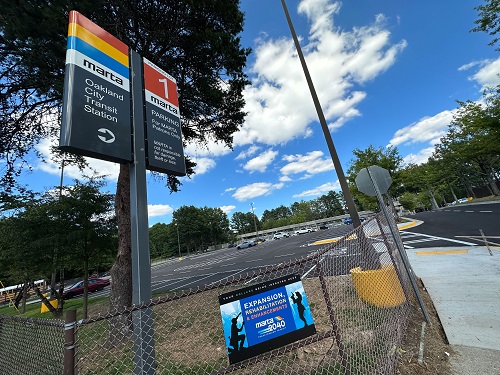In its latest ‘Extra Mile’ blog post, the Georgia Department of Transportation explained how it is working with Metropolitan Atlanta Rapid Transit Authority or MARTA to systemically improve safety at bus stops across the Atlanta metropolitan area for all roadway users – pedestrians, bicyclists, transit riders, and motorists alike.
[Above photo by MARTA]
The bottom line of this joint Georgia DOT/MARTA study is that bus stops are places where pedestrians and bicyclists often cross the road to access transit – and thus safe crossings need to be provided.
To that end, Georgia DOT and MARTA are taking a “pro-active approach” to generate systemic safety improvements using data science and automation. That data includes crashes, census data, speeds, traffic volume, and roadway geometry to identify and prioritize bus stops that need safety improvements on a network level.
Georgia DOT said MARTA helped create a data set for all of its more than 8,000 bus stops in the city. For the project, the agency analyzed the bus stops that were at “non-signalized” locations, where people would have to go out of their way to cross the roadway within a crosswalk to reach a bus stop.
Using both historical and predictive crash data, a cost-benefit analysis was conducted to look at what crash reductions and costs savings could be expected given the implementation of different safety measures.
Those included hybrid pedestrian beacons, rectangular rapid flashing beacons and raised crosswalks, said Georgia DOT, with – wherever feasible – the shortening of pedestrian crossing distances along with the addition of a media for greater pedestrian crossing protection. Georgia DOT added that, because this particular bus stop analysis can be run automatically, the agency should be able to conduct future studies to make such safety improvements more efficiently.
 States
States
Kris Strickler to Step Down as Oregon DOT Director
November 14, 2025 States
States

